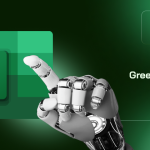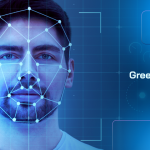
AI-generated nudes have quickly moved from niche technology to a growing concern—especially for young people. With just a few clicks, it’s now possible to create and share fake nude images of real people online.
These images aren’t just fantasy content. In many cases, they’re being used without consent, often in school settings and private chats, leading to serious emotional harm for those targeted.
Tools powered by generative AI are being misused—mainly by teens—to create deepfake nudes of classmates. While some platforms focus on adult roleplay, the misuse of these tools in personal and school environments raises new challenges.
In this article, we’ll break down how AI-generated sexual content works, how it’s being used, what the laws currently say, and what actions parents, schools, and platforms can take to protect kids in digital spaces.
Popular AI Nude Generators for Adults
Some AI apps were built for adults seeking safe, consensual digital experiences. These platforms focus on romantic AI, adult AI chat, and immersive fantasy. When used ethically and with consent, AI-generated nudes can be part of private adult interaction, not abuse. The tools below serve that purpose.
- Candy.AI – Best AI Nudes Generator Overall
- SoulFun – Best AI Nude Photo for Free Nudes
- Prompt Chan – Best AI-Generated Nudes for AI Nude Images
- Seduced AI – Best AI Nude Undresser for Fake Nudes
- NSFW Art Generator – Best Porn AI Generate & AI Porn Video Generator
- GirlfriendGPT – Best NSFW AI Girlfriend Chat for Realistic Nudes
These nude AI tools are designed for consenting adults and ethical use. The following sections explore the dangers of non-consensual AI-generated nudes, especially those involving minors.
What Are AI Generated Nudes

AI-generated nudes are digitally created nude or sexual images produced by artificial intelligence. These visuals are built using deep learning models trained on massive datasets to create realistic or stylized results based on user prompts.
The technology can replicate faces, bodies, lighting, and poses to create content that looks real—even if the subject never posed for it.
While some use it for adult fantasy or art, the potential for misuse is serious. These tools can create nude images of real people without consent, leading to deep privacy and safety concerns. This report by the LA Times highlights how teens are using AI to generate fake nudes of classmates, with devastating consequences.
Organizations like the National Center for Missing and Exploited Children now partner with tech companies to identify and report these violations. Their goal is to flag and remove harmful content, especially when children are involved.
What makes this worse is the legal grey area. In many places, there are no clear laws about creating or sharing fake nude content, even when it targets someone without their permission.
This gap allows abusers to act with little accountability. The urgency to set boundaries and enforce ethical, responsible use has never been higher.
Teen Abuse: How Students Are Misusing AI in Schools
In many school districts, boys are using AI tools to create fake nudes and deepfakes of female classmates. These AI-generated nude images are often shared in secret group chats, spreading quickly among kids without the girl’s knowledge.
Nearly one in ten students say they know someone who has done this.
The abuse is targeted. Most of these tools are used to “nudify” girls, making them the primary victims. The impact is emotional, damaging, and long-lasting, especially in tight-knit school settings.
This trend has become a new form of digital harassment in schools. It violates trust and consent and leaves many classmates, especially girls, feeling exposed and unsafe.
Parents and teachers are struggling to respond. Most are unprepared to deal with this level of tech misuse. Meanwhile, the tools keep spreading, and more students are being harmed.
The Harm Caused by AI-Generated Nudes
AI-generated nudes may be fake, but the harm is real. These images can destroy trust, trigger emotional trauma, and shatter a person’s sense of safety, especially when they target students or young people.
Once fake nudes are created and shared, the victims face bullying, shame, and isolation. Reputations are ruined. Relationships break. Many are left afraid to return to school or even speak up.
This technology turns minors into targets—without ever touching them. And the consequences last far beyond the moment a photo is created.
Child Sexual Abuse and Exploitation
Creating fake nude photos of children or students is a form of child sexual abuse, even if the image is digital.
These AI-generated images are often shared without consent. They show minors in sexual situations they were never part of—but the emotional harm feels just as real.
Victims experience fear, guilt, and deep confusion. The abuse may be digital, but it carries the same psychological weight as real-world exploitation.
Psychological Impact on Young Victims
Children don’t need physical contact to suffer trauma.
Minors targeted by AI-generated sexual imagery often face intense emotional damage—anxiety, depression, and sometimes even suicidal thoughts.
They withdraw, fall behind in school, and lose trust in others. Some never recover from the fear and shame. Others suffer in silence, unsure where to turn.
The effects are especially severe for young people, whose sense of identity and self-worth is still developing.
AI, Consent, and Digital Ethics

AI-powered sexual imagery often blurs the line between what’s real and what’s fake. When an image shows a real person in a fake sex act, it still violates their privacy and consent.
These AI-generated nudes may be made with code—but the harm they cause is personal.
Ten U.S. states now ban non-consensual deepfake porn, but most regions still have weak protections. People can create and share this content freely—leaving victims vulnerable in digital spaces that offer no safety.
The ethical AI standard must be clear: consent, respect, and accountability should guide every use of artificial intelligence in image creation.
Is Creating AI Nude Images Legal?
The legality of AI-generated nude images depends on where you live. Here are the key factors:
Jurisdiction
Laws vary. Some countries and states restrict or ban the creation and distribution of explicit AI content—especially if it resembles a real person without consent.
In the UK, for example, AI tools that generate sexual imagery of children are not yet illegal.
Privacy
Even if an image isn’t based on a real person, issues arise when it resembles someone. Many jurisdictions have laws that protect individuals from unauthorized use of their likeness, even in digital form.
Intention of Use
Why you create these images matters. If the purpose is to harass, defame, or sexually exploit someone, it can carry legal consequences—especially with non-consensual content.
Ethical Implications
Even in places where it’s legal, creating AI sexual content without clear consent is unethical. Using the tech responsibly means respecting personal rights and societal boundaries.
Safe Use and Regulation
Stay informed. Follow platform guidelines. Never create or share content that misleads, harasses, or causes harm. New laws are still evolving—but your actions already matter.
Risks and Challenges

Stopping the spread of deepfake content isn’t easy. Weak laws, fast-moving technology, and gaps in app policies let harmful content slip through.
Generative AI and other AI tools evolve faster than lawmakers can respond, creating a system that fails to protect children. Schools and platforms are struggling to keep up with what’s being created daily.
Rapid Creation and Distribution
AI tools can generate sexual images in seconds. With just a few prompts, users can create photos, videos, or fake nudes that look real.
These files then spread fast through search engines, private accounts, and social platforms. Anonymous users and online communities make it hard to track or stop.
This speed increases harm and leaves victims with almost no time to react.
Responding to Victimisation
Once abuse happens, action must be immediate.
Schools, parents, and tech companies need to coordinate responses. That means taking down harmful content, reporting abuse, and closing platform loopholes.
Clear reporting systems should exist for every school and platform. Without them, most victims never get help—and the cycle continues.
Governments must pass stronger laws. Apps hosting deepfake tools should be banned. Companies need better policies that block abuse before it spreads.
Everyone—families, schools, tech firms—has a role in stopping this kind of digital sexual abuse.
Supporting Victims of AI-Generated Nudes
Support starts with safety and empathy.
Students need access to therapy, school counselors, and trusted adults. Victims should feel safe reporting abuse without shame or blame.
Parents must take emotional harm seriously. Early intervention can prevent trauma from escalating.
Legal aid, helplines, and safe reporting systems are essential. Many victims never speak up—but even one strong support system can change that.
This isn’t just a school issue. It’s about helping young people rebuild trust, feel protected, and know they’re not alone.
FAQ About AI Generated Nudes
What are AI generated nudes?
These are digitally created photos that show people in nude or sexual poses. The images may be based on real students, strangers, or fictional models. Often made without consent, they can cause serious harm, especially to young victims in schools and online.
Are AI generated nudes illegal?
It depends on your location. Some places treat fake nude photos as legal unless they involve minors, sexual abuse, or lack consent. If a photo targets a real person, like a classmate, it may violate harassment or defamation laws.
How can I remove fake nudes from the internet?
Report the image to the platform where it appears. Many sites offer takedown tools, especially for students or minors. Contact law enforcement or use online reputation services. The faster you act, the more you can protect yourself.
How do I know if my photo was used to create a deepfake nude?
Use reverse image search tools to look for your face online. Pay attention to rumors or suspicious links shared at school. If you’re unsure, talk to parents or someone you trust. Deepfakes often spread quietly—early action helps.
What can schools do about deepfake nudes?
Schools should create strong digital safety rules, train staff, and respond quickly to reports. Support victims with counseling and involve parents and authorities. Their job is to protect students, monitor harmful content, and stop further abuse.
How accurate are AI nude generators in creating realistic images?
Some AI tools can generate fake photos that look disturbingly real. They mimic faces, body shapes, and lighting. This realism increases the emotional damage for victims, especially children. Many struggle because the image looks believable—even if it’s fake.
Are free AI nude generators suitable for artistic projects?
They can be. Free tools are useful for exploring ideas but often lack customization, quality, or usage rights. If you’re serious about publishing or selling the work, check what the platform allows.
AI Generated Nudes: Our Final Thoughts
AI-generated sexual content is not just a tech issue—it’s a serious and growing threat. When fake nudes are created and shared without consent, especially in schools, the harm is real.
These images cause deep emotional damage, violate privacy, and expose gaps in current laws. For students, it’s a form of digital sexual abuse. For parents and educators, it’s a call to act.
We must build stronger systems to protect children. That means updated laws, responsible platforms, and support for victims.
Talk about it. Report abuse. Demand accountability. Technology will keep moving—but so must our protections.
Disclaimer: Greenbot does not support the use of AI tools to generate nude images of real people without consent, as it violates privacy and ethical standards and may result in legal consequences. Our recommendations focus solely on AI-generated content involving no real individuals. These tools are for artistic and creative purposes, and we encourage responsible use in line with legal and ethical guidelines.




















